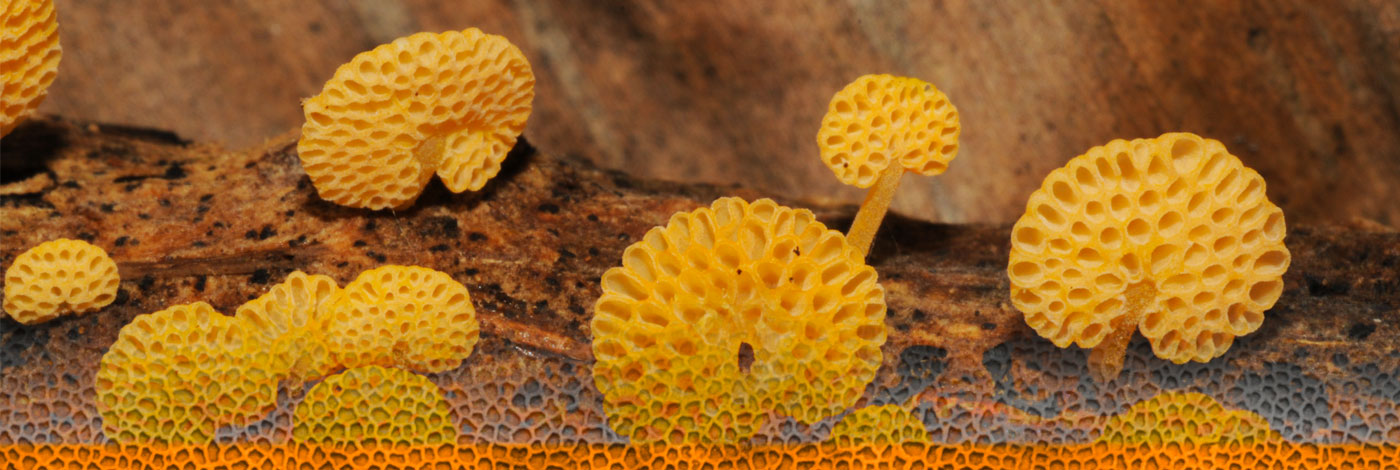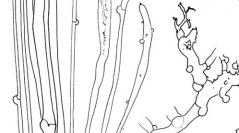

 Cryptogamie, Mycologie
33 (4) - Pages 427-437
Cryptogamie, Mycologie
33 (4) - Pages 427-437Vararia V. lanquetiniana and Vararia V. boidiniana (Basidiomycota, Russulales), two new species respectively collected in New-Caledonia (France, South Pacific) and Mayotte (France, Comoros archipelago, Indian Ocean), are described and illustrated in this paper. Both species form resupinate, pellicular and closely adnate, greyish to ochre-argillaceous fruit bodies, and produce smooth, thin-walled, non-amyloid basidiospores, without a distinct amyloid suprahilar spot (in V. lanquetinae sometimes with a very subtle grayish patch). Both are in particular characterized by unusually small, racemose dichohyphidia, not dichotomically branching, but with very short, tortuous or finely botryophysoid terminal branches, very weakly dextrinoid, only partially so after AMA treatment. V. lanquetiniana is the second species of Vararia described from New-Caledonia, whereas Vararia V. boidiniana is the first representative of this genus on the Island of Mayotte.